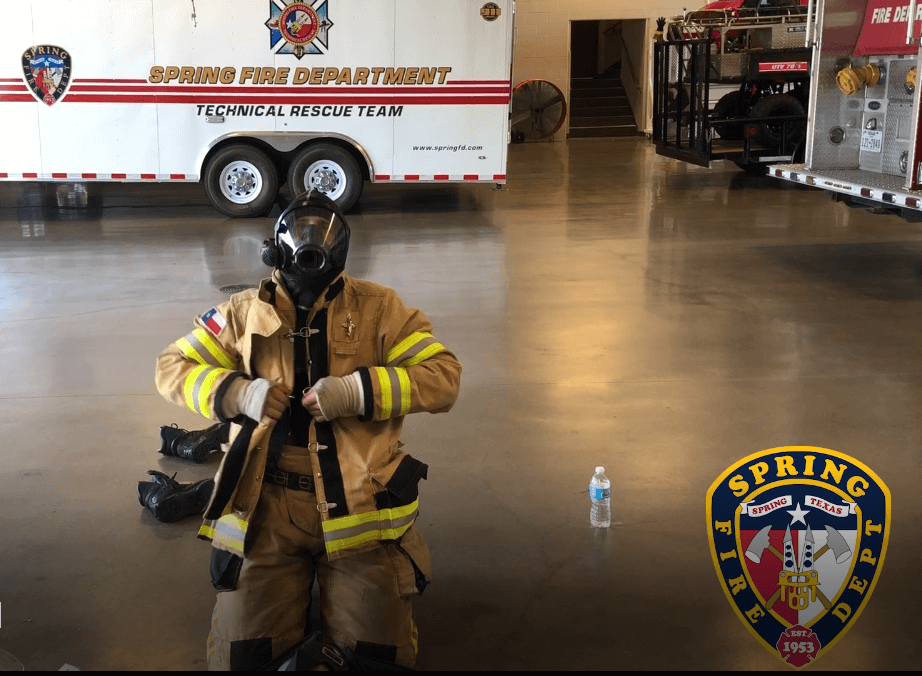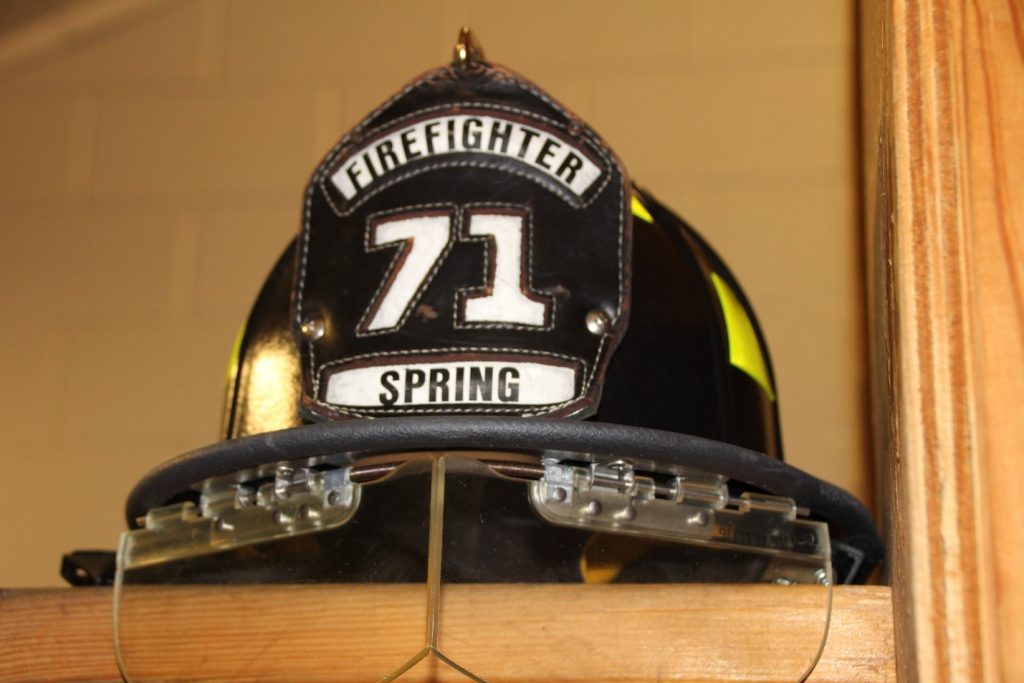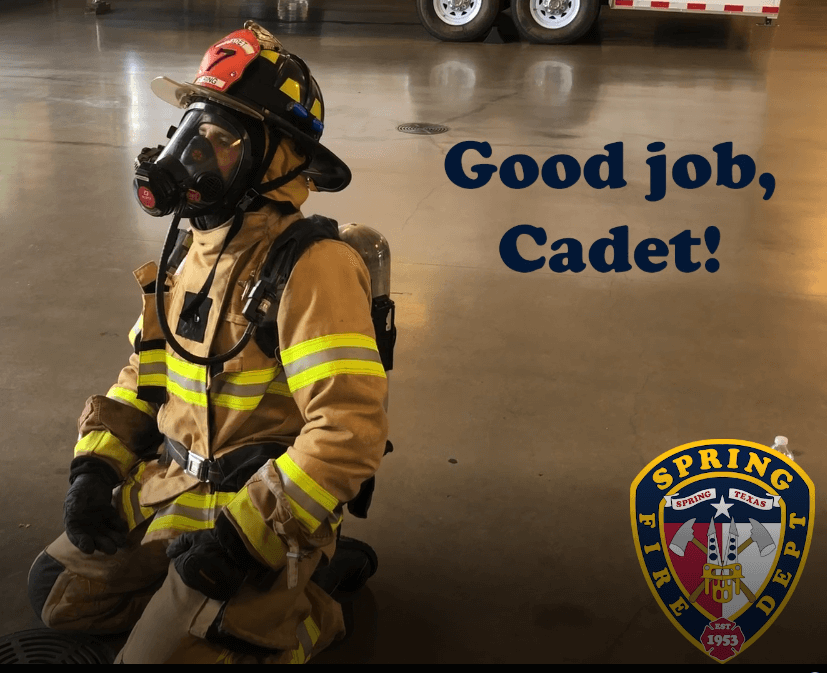Dressed to Save Lives: Bunker Gear Drill
By Hannah Falcon
When firefighters get a call, they have to be on the road as fast as possible. So they regularly drill on how to put on their bunker gear. According to the Fire Protection Association standard, firefighters have to get their bunker gear on within 90 seconds.
The bunker gear drill is the first drill firefighters learn when they join the Spring Fire Department, according to Deputy Chief of the Training Division Joel Crenshaw. In addition to whichever tools they carry with them, firefighters don 45 to 60 pounds of gear. Every piece of their ensemble has a purpose and the order they put it on is intentional.
“After he takes off his station shoes, he’s going to put his mask on with his hood on,” Crenshaw said. “The mask allows him to have the air regulator hooked in so he can breathe the air and the hood is going to protect your head and your neck from any embers falling in between the jacket and it’s going to keep the seal around your mask so that you don’t get burned on your face.”

Every piece of equipment firefighters wear protects them from injuries. For example, the coat and pants they wear have a moisture barrier to keep firefighters cool amidst the flames. The barrier uses a person’s own sweat to create a heat shield.
 (Photo credit: Hannah Falcon)
(Photo credit: Hannah Falcon)
Another piece that protects firefighters in many situations is their helmet.
“The helmet protects you from falling debris. It’s a hard helmet on the outside and it’s got a cushion on the inside so it keeps your head safe. You’ll notice it has that big brim around the outside that is to keep the hot water and embers from falling down your neck around your collar,” Crenshaw said.
Contrary to popular beliefs, the majority of firefighters’ calls are not fires. They respond to a lot of medical calls and car accidents. The uniform they wear is different in order to adapt to the situation they’re facing.

“If they’re going to a motor vehicle accident that is reported entrapment, they are going to put on all of the ensemble except for the air packs and the hood. So they’ll have their helmet, their boots and gloves and their bunker pants on because it protects them from getting cut when operating around sharp, torn metal,” Crenshaw said. “Going on a medical call, you typically do not have to have your full ensemble on. It’ll basic Body Substance Isolation.”
Hannah Falcon is a sophomore Communication major at Texas A&M University. A Staff Writer and Life & Arts Editor for the Texas A&M Battalion, Falcon is spending the summer as a volunteer writer for Spring Fire Community News.
